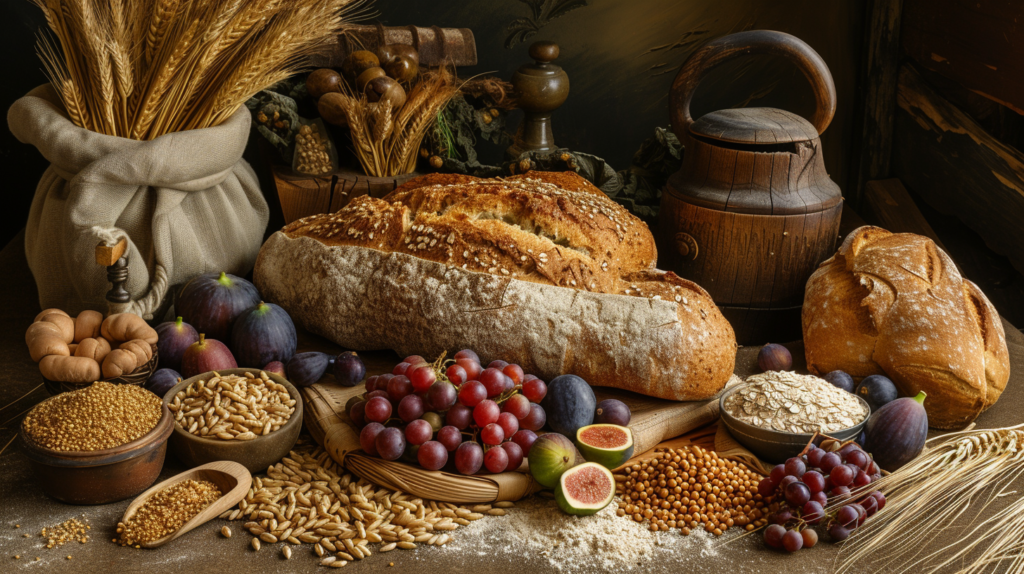The diet during the time of Jesus Christ was markedly different from today’s modern eating habits. It was simpler, more natural, and deeply intertwined with the cultural and geographical context of the era. This blog explores three key aspects of what people used to eat during Jesus Christ’s time, offering insights into their dietary practices.

1. Simplicity and Natural Foods
The diet in Jesus Christ’s era was characterized by its simplicity and reliance on natural, unprocessed foods. People consumed what they could grow, harvest, or trade locally. This included a variety of whole grains like wheat and barley, which were staples in their diet. Bread, made from these grains, was a daily food item, often referred to in biblical texts.
Fruits and vegetables were also integral to the diet. Figs, pomegranates, olives, and dates were common, along with vegetables like lentils and beans. These foods were consumed in their natural form, free from modern processing methods, aligning with the philosophy that unprocessed foods are fundamental for optimal health.
2. Animal Products and Dairy
Meat consumption during the time of Jesus Christ was less prevalent than it is today, mainly due to economic and religious factors. However, when meat was consumed, it was often from animals like lamb and goat. These meats, especially in their unprocessed forms, are rich in essential nutrients like protein, iron, and B vitamins.
Dairy products such as milk, cheese, and yoghurt were also part of their diet, primarily from goats and sheep. These dairy products were consumed in their raw forms, providing beneficial enzymes and nutrients often lost in the pasteurization process used today. The consumption of raw dairy aligns with the idea that less processed foods are more beneficial, offering a more natural nutrient profile.


3. Fish and Occasional Luxuries
Fish was a significant part of the diet, especially for those living near the Sea of Galilee and the Mediterranean coast. Fish provided a valuable source of protein and omega-3 fatty acids. However, unlike modern times, the concerns related to heavy metals and microplastics were non-existent, making fish a healthier option back then.
Occasional luxuries like honey were also part of the diet, used as natural sweeteners. The consumption of honey, as opposed to refined sugars, highlights the preference for natural, unprocessed foods. Wine, too, was commonly consumed, often diluted with water, and played a cultural and religious role in their daily lives.
Check out more on the benefits and risks of eating fish now here.
In conclusion, the diet during the time of Jesus Christ was simple, natural, and primarily plant-based, with occasional consumption of meat, dairy, and fish. It reflected a lifestyle that was closely connected to the land and the seasons, emphasising the consumption of whole, unprocessed foods. Understanding what people used to eat during Jesus Christ’s time offers valuable insights into the benefits of a diet focused on natural and minimally processed foods, resonating with the principles of optimal health and nutrition.